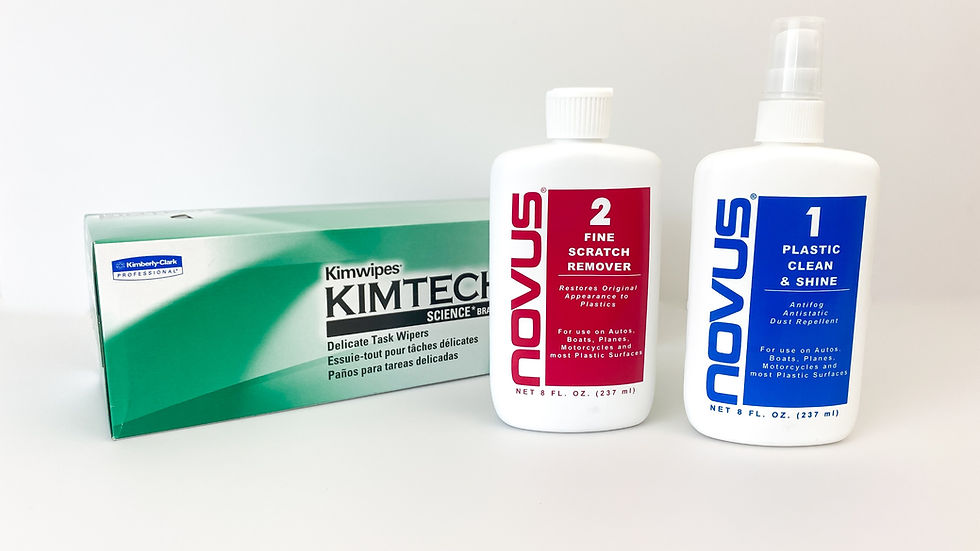How to repair a scratch on a plexiglass, PETG or a Lexan?
- Karo
- 28 juin 2021
- 3 min de lecture

Some scratches may appear on your plastic, but fortunately, easy and effective solutions exist to soften their appearances. The repair technique will be adapted according to the type of scratch (superficial or deep). To know what we are up against, if you can feel a notch while passing your nail carefully on the plastic, this means that the scratch is deep.
In this article, you will learn the best practices to fix scratches on your plastic (acrylic, PETG and polycarbonate) using varied methods, such as with Novus® products, sandblasting, heat gun or flame.

Acrylic (Plexiglass)
Novus Products: For superficial scratches, it is possible to polish the surface with different Novus® products (available at Plastica). The advantages of this method are, without any doubt, its efficacy and ease of use. We always recommend doing a test on a small section of your plastic before polishing it.
Here is how to do it:
Before starting anything, you have to make sure that your plastic is clean. Dust or dirt might scratch your acrylic more before polishing. To know how to clean your plastic, click here.
Apply Novus 2® on the plexiglass zone to repair.
Rub vigorously for about 1 minute with a Kimtech© cloth (available at Plastica) or a microfiber cloth. Always make circular motions.
You can repeat steps 2 and 3 if needed on your most tenacious scratches.
To avoid that static attracts dust and dirt on your acrylic, you can finish with Novus 1® or Brillianize products (available at Plastica)
Sandblasting:
For superficial scratches, this technique requires more time and patience. Firstly, you must sandblast your plexiglass with 600 or 1000 grit sandpaper on the zone to repair. It is possible to do it manually or at orbital. To finish, polishing acrylic is done with a buffing wheel. The plastic will be slightly deformed after repairing the scratch. This technique requires experience.
For questions or a repair request, contact Plastica!
Flam:
The flame will polish deep and whitish scratches by giving them back their transparency. The scratch will always be perceptible to the touch, but it will be less visible on your plexiglass. You must proceed gently with a soft flame. Polishing with a flame requires experience and we do not recommend doing it at home.
For questions or a repair request, contact Plastica.
PETG (Polyethylene terephthalate glycol)
Heat Gun:
For superficial scratches, the warmth of the heat gun will polish the scratch on your PETG by giving it its transparency. The scratch will always be visible in the light, and the heat worked area will be visible on your PETG or Lexan. If the heat gun is too hot or too near the plastic, it will deform the PETG. The PETG is very reactive to heat. This technique requires experience.
For questions or a repair request, contact Plastica.
Polycarbonate (Lexan)
Heat Gun:
For superficial or deep scratches on your Lexan, it is possible to polish the scratch by giving it its transparency with a heat gun. The scratch will always be visible in the light, and the heat worked area will be visible on your polycarbonate. If the heat gun is too hot or too near the plastic, it will deform the Lexan. This technique requires experience.
For questions or a repair request, contact Plastica.
To conclude, it is possible to improve the appearance of a scratch on acrylic, PETG and polycarbonate, but they will never come back like new. The risk of breaking the plastic while repairing it is still present. The techniques mentioned above can be applied to a plastic made with a digital CNC cutting, laser cutting, or table saw cutting. To avoid scratches, know that there exists scratch-resistant plastics.
You can contact us for more information!








